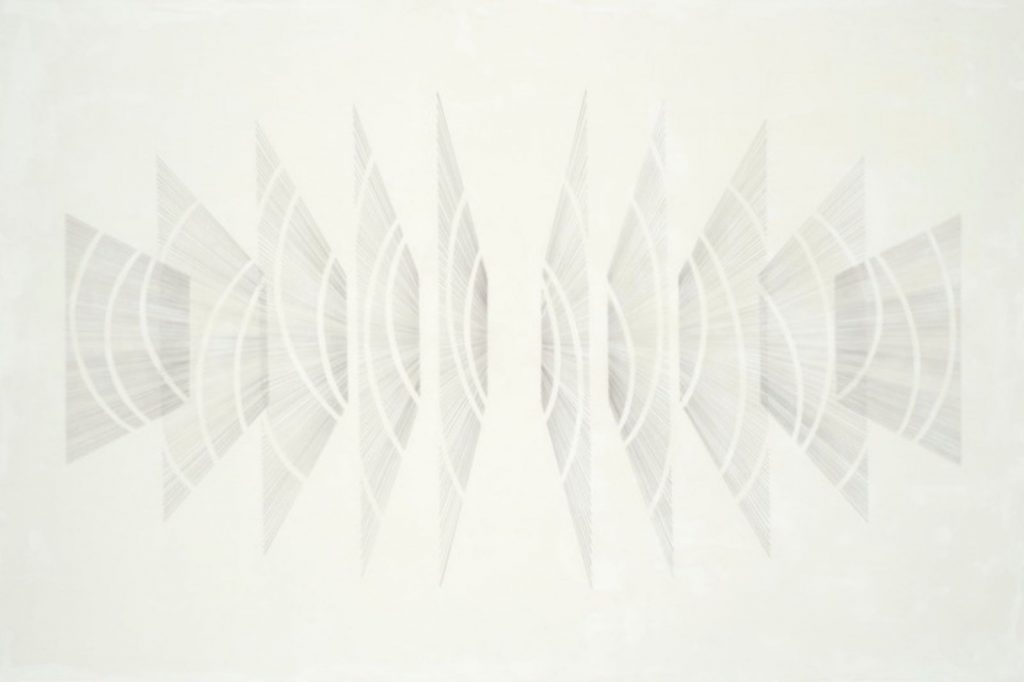Reconceiving spiritual art, Tibetan American artist Palden Weinreb has introduced ambiguity and abstraction into Buddhist iconography, historically defined by traditional methods and rigid, stylized forms. Weinreb’s sublime, minimalist aesthetic is reflected in the interplay of movement, space, light, and linework that characterizes his multimedia sculptures, drawings, lithographs, and encaustic (wax) paintings. A New Yorker born and raised, he works out of a studio in Long Island City. But having inherited from his Tibetan parents the identity of the dispossessed and the culture of devotion, Weinreb in his work contends with the tension of emptiness and belonging, tradition and adaptation.
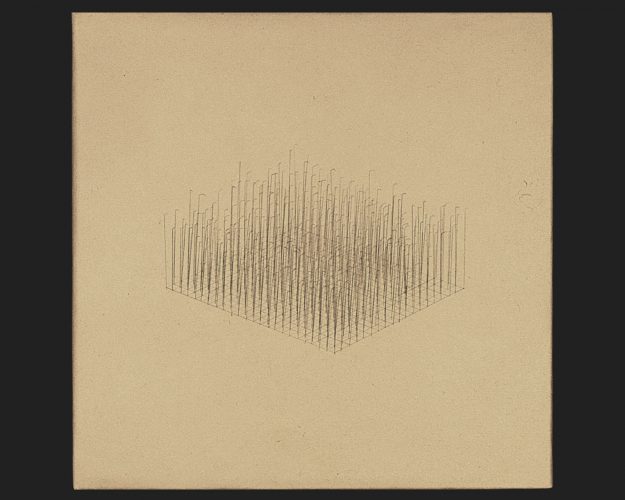
Weinreb in his work contends with the tension of emptiness and belonging, tradition and adaptation.
The results have been well received, with exhibitions in London, Hong Kong, and Shanghai, and in the United States at the Rubin Museum of Art, Asia Society, and the Queens Museum of Art in New York, and at the San Francisco Asian Art Museum and Asia Society Texas.
Early in his career, Weinreb, now 42, began viewing his drawings as a “visual documentation”—a record of his meditation practice. Reciting a mantra with every line he renders in drawings like Untitled (Bending Tide), Oblivion (#1, #2, #3), and Untitled (s_buddha), the artist translates his practice onto paper in a process that echoes the meditative ritual used by Tibetan Buddhist monks in creating a sand mandala, an impermanent symbol of a perfect universe. In Weinreb’s work, the physical expression of his meditative rite is reoriented to accommodate bright gallery lights, the mobility of traveling exhibitions, and the cosmopolitan crowd that follows gallery openings.
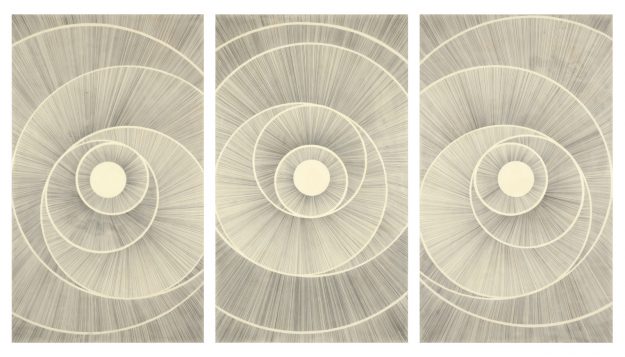
Removed from the hallowed halls of a gompa (Tibetan monastery) and rituals of religious consecration, the meaning and poetics of Weinreb’s art take on a different form. But even so, the essence remains inextricably informed by the Buddhist ideals and Tibetan Buddhist practices that inspire it.
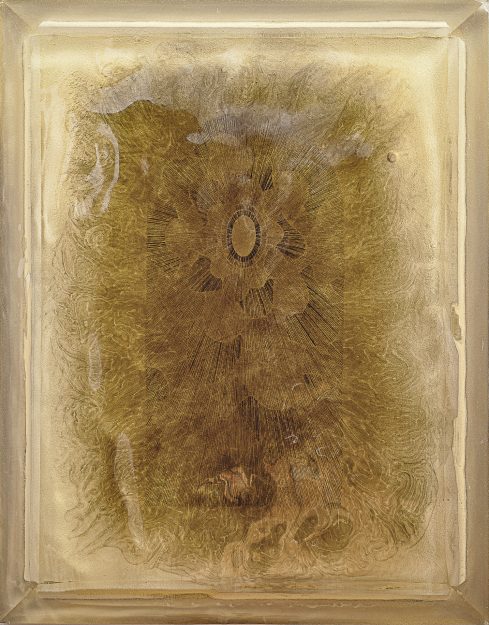
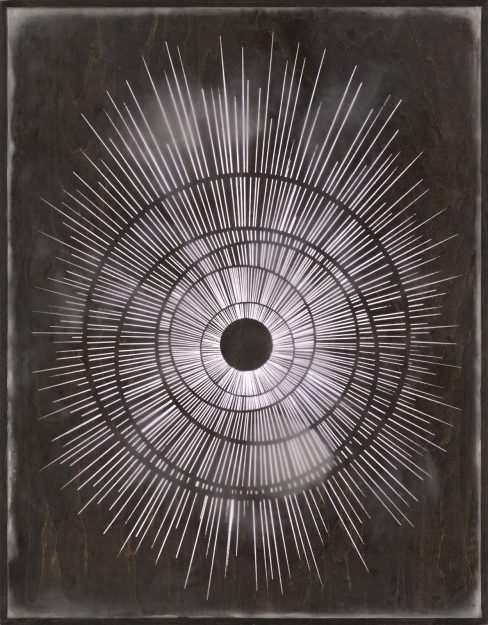
In a video for the Rubin Museum Daily Offering series, Weinreb explained that as he works on a piece, over time the lines overlay, creating “a sense of dense movement” that blurs the distinction between foreground and background, presence and absence. About his process, Weinreb says he loosely plans what he hopes to portray, then surrenders the work to its organic unfolding, making him an observer to the work’s final evolution. At the center of his circular drawings is emptiness. “So the inherent emptiness of the page is now defined by my meditation practice,” he said in the Rubin Museum video.
“Alluding to an unknown order in the chaos has always been a driving force in my work.”
Transmitting prayer in this way mirrors Weinreb’s ongoing fascination with the organizing principles of the natural world and how they enter into his art. “I’ve always had an interest in the unapparent systems and structures that make up the natural world,” he said in a talk at Asia Society’s 2016 exhibition, Drawn from Nature. “The idea of an invisible framework for our existence fascinates me. “Alluding to an unknown order in the chaos has always been a driving force in my work.”
Weinreb’s contemporary modifications to a traditional form and process sow the seeds of new possibilities for the variety of people who seek closeness to the sacred. This work of redefining or refining spirituality to meet the language and people of today asks: How do I access the divine or sacred? And what does spiritual liberation, or refuge, look like for a person like me?
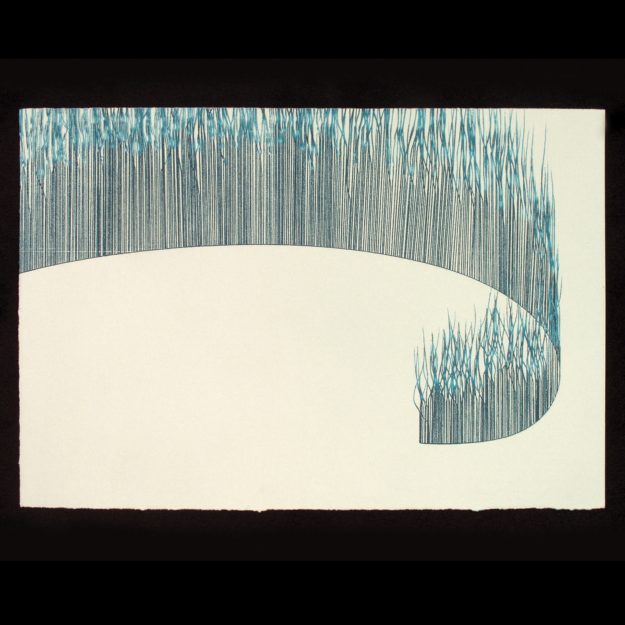
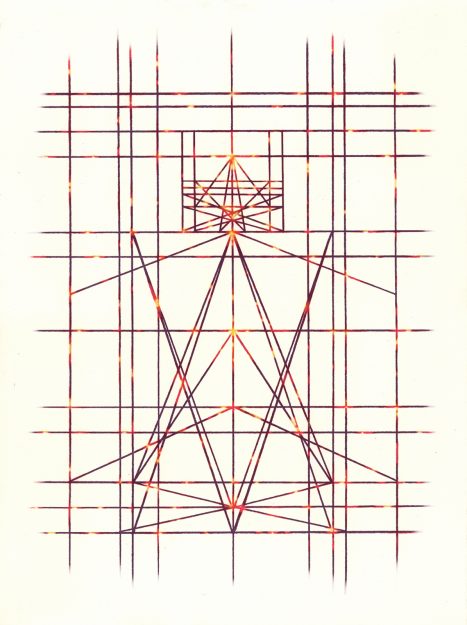
Thank you for subscribing to Tricycle! As a nonprofit, we depend on readers like you to keep Buddhist teachings and practices widely available.
